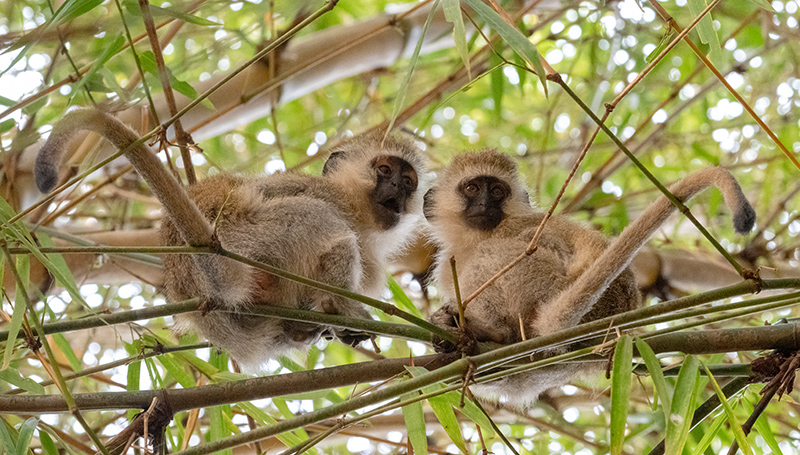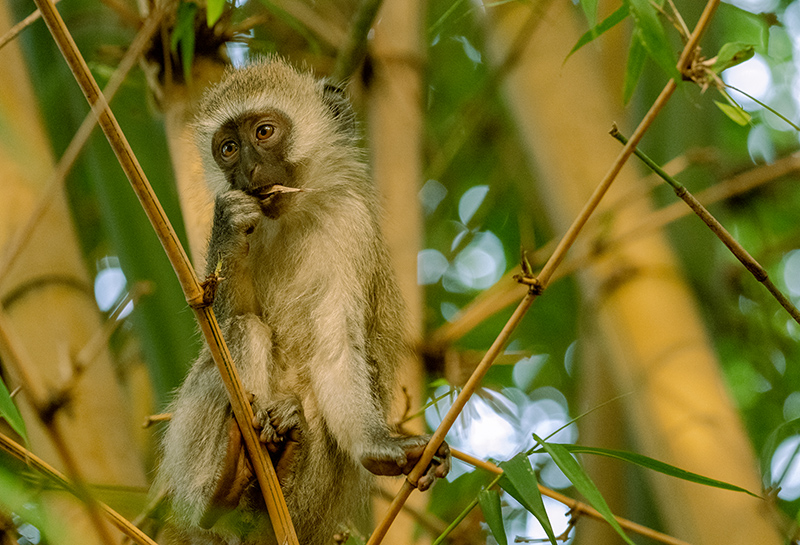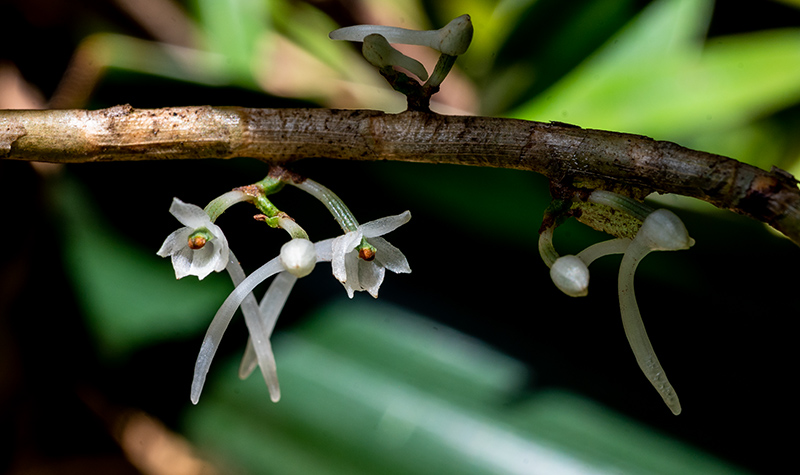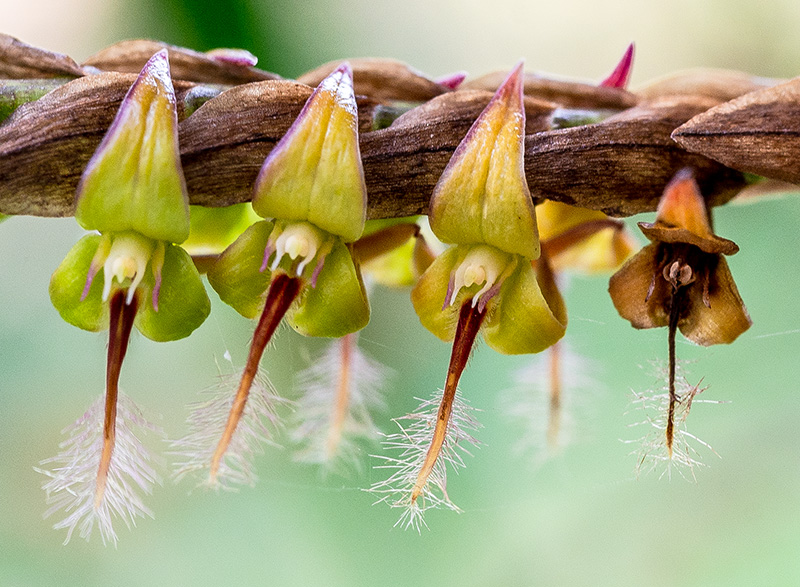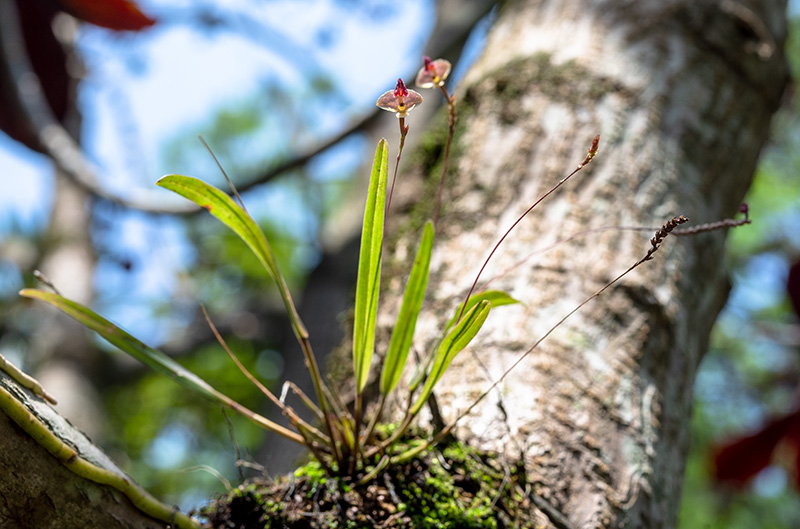another orchid garden
 On September 26, the road towards Nyungwe leads us first to the city of Butare, in the district of Huye. The German state of Rhineland-Palatinate maintains a research house there. On October 7, we are there a second time on our way back to Kigali. The garden is a small paradise with a bamboo grove and many native trees with orchids growing on their trunks and branches. A hibiscus is also in bloom when we arrive.
On September 26, the road towards Nyungwe leads us first to the city of Butare, in the district of Huye. The German state of Rhineland-Palatinate maintains a research house there. On October 7, we are there a second time on our way back to Kigali. The garden is a small paradise with a bamboo grove and many native trees with orchids growing on their trunks and branches. A hibiscus is also in bloom when we arrive.
I am happy about the second encounter with an orchid of the genus Tridactyle. Three years ago I had seen Tridactyle bicaudata at the edge of Kamiranzovu Swamp in Nyungwe National Park. Here Tridactyle virgula is in bloom. Both have in common that the flowers grow directly from a woody stem. The genus Tridactyle was established in 1915 by Rudolf Schlechter (1872-1925). In his book Die Orchideen, ihre Beschreibung, Kultur und Züchtung (The Orchids, their description, culture and cultivation), he names three orchid species that had previously been considered species of the genus Angraecum, including the then Angraecum bicaudatum. They all form a quite natural genus, easily recognizable by habit alone, Schlechter writes, emphasizing the tripartite lip - hence the name tridactyle - often with split or slit lateral lobes and slender cylindrical spur, never very long. The delicate plants are among my favorite orchids in the African rainforest.
A Bulbophyllum flower amazes with filigree hairs at the end of the lip - Bulbophyllum vulcanicum is an endemic of the African Rift Valley and is at home from eastern Congo via Rwanda to western Uganda.
A particularly beautiful Polystachya shines in the morning backlight in early October: Polystachya dewanckeliana.
In the early morning, however, other beings are also alive.
Breakfast in the Bamboo groove
A family of Vervet monkeys (Chlorocebus) jumps through the garden and feasts on the bamboo leaves. Curiously they look down on me.
